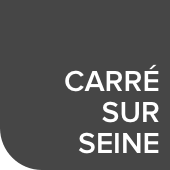Lucie Morel, Chez Mamie, 2020, detail
Monday 17 January 2022 - 18:30
Meetings-screenings
Listen
to see
organizer
Carré Sur Seine
Location
Galerie Mondapart
80, rue du Château
Boulogne-Billancourt
Guest artists
Benjamin Collet
Lucie Morel
Nelson Pernisco
Monday 17 January 2022 - 18:30
Meetings-screenings
Écoutez Voir
organizer
Carré Sur Seine
Venue
Galerie Mondapart
80, rue du Château
Boulogne-Billancourt
Guest artists
Multidisciplinary
True to its vocation of promoting contemporary creation, driven by the desire to raise public awareness of the visual arts and to encourage the emergence of new collectors,association Carré sur Seine continues the Écoutez-Voir cycles.
We are happy to see you again for this new monthly cycle, from November 2021 to April 2022 in Boulogne-Billancourt!
Each month, in Boulogne-Billancourt or by videoconference, these meetings-projections with today's artists are unique moments of sharing. Écoutez-Voir is an opportunity to approach the work of artists in an original way, to discover the secrets of their approach and to question the elements of their work.
All artistic disciplines are covered, from painting to video, including sculpture, installations and photography. A great opportunity for artistic investigation, real moments of sharing and dialogue between artists, collectors and members of Carré sur Seine !
At the end of the series of conferences, the Jury of Carré sur Seine members will choose a winning artist who will receive the Ecoutez-Voir Prize, accompanied by an endowment of 2,000 euros.
Three artists in the spotlight this Monday 17 January 2022
Benjamin Collet - Artist
Lucie Morel - Draughtsman
Nelson Pernisco - Artist
6.30 pm: Welcome with a drink
7.00 pm: Screening Listen and See
8.30 pm : Meeting with the artists
Click here to book your place!
Benjamin Collet
-plastician-
"The whole meaning of the Tractatus can be summarized as follows: everything that can be said can be said clearly, and what cannot be said must be kept silent.
- Ludwig Wittgenstein
Wikipedia describes the Wittgenstein Haus, or Wittgenstein House, designed by the philosopher and engineer Ludwig of the same name, as being comparable to the architecture of his Tractatus, in that it embodies the logic depicted in his work but also a certain enigmatic singularity.
"If, on the inside, the house seduces by its perfect transparency and the exposure of its mechanics - the cable of the lift, for example -, from the outside it produces the effect of an enigma whose possible meaning we think we can sense without being able to formulate the underlying question. "
Perhaps the same is true of my view of the Wonder, the place where I work and spend most of my time. Through a few anecdotes reported in a story that began afterwards, giving shape to a short story that begins with the last sentence and ends with the first.
A short story that was designed by Vincent Duc and printed at the Atelier Peso Pluma in Vaulx-en-Velin, under the storm and in good company.
Four paintings chapter this story in their own way and the whole is accompanied by a reading cabinet produced with the support and patience of Jean-Benoit Lallemant at the Ateliers Wonder/Fortin in Clichy.
In the end, I would like to add, in order to clarify my point, that it is difficult to say the last word.
Lucie Morel
-draughtswoman-
"I am fascinated by people. I often have fun imitating others and very early in my life I felt the urge to draw them. This desire became a reflex and drawing others became a ritual.
This thread that separates the beautiful from the ugly, the acceptable from the unacceptable, normality from madness, is a sensitive thread that fascinates me and questions me a lot.
At what point can you say that something is 'not done'? At what point in the barometer does one become "crazy"? Who decides on the barometers?
I have had obsessive-compulsive disorder since childhood and my current work questions the ways in which this mental disorder can be told through drawing."
Nelson Pernisco
-plastician-
The artist thus puts the seditious energy of his beginnings at the service of a logic of artistic resistance: from Molotov cocktails to burnt debris, the use of industrial or technological waste, of poor and often recuperated materials, serves to underline the violence of a system, ironising on the perpetuation of the state of emergency or the standardisation of capitalist logics. The imaginary of materials is therefore always dependent on the political meanings they cover, but recently, the critique of the fabrication of history, and the readings that can be made of it, has given way to a reflection on art as a force of proposition.
Carried by a prospective ambition, he gives an account of the decisive step that his work marks by passing from the purely dissident act to a more projective thought, from a worried dystopian vision to the possibility of a concrete utopia.




